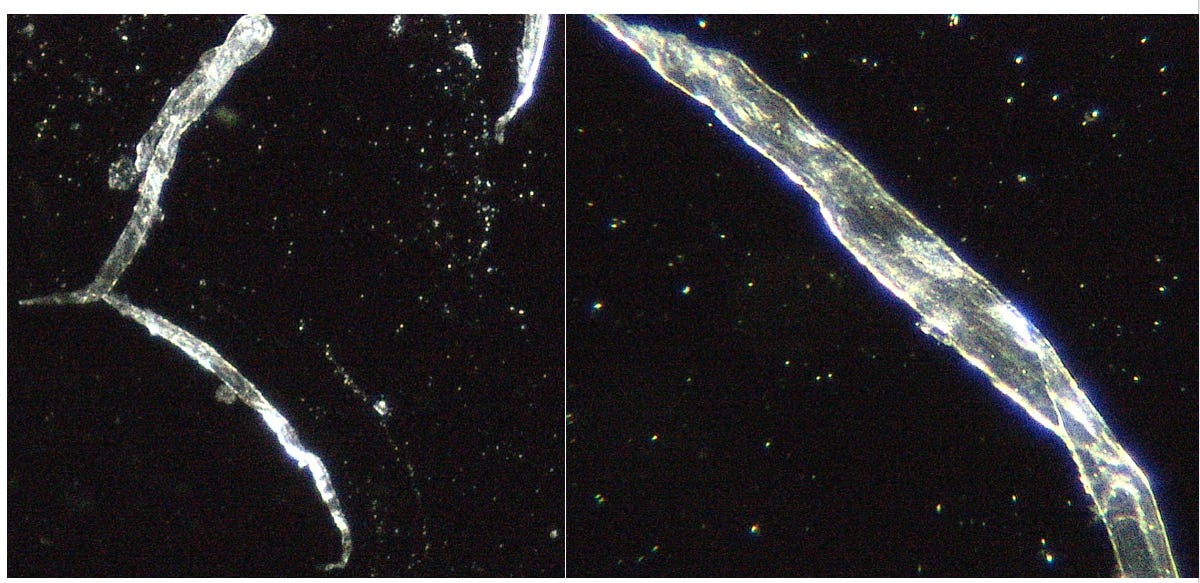Graphene Oxide • Hydrogel In Injectable Medications • Dexamethasone, Insulin, Benadryl + Lidocaine

EuropeReloaded.com
Ana Maria Mihalcea, MD, PHD
In the video above, I show many images as well as video footage of how the hydrogel grows within minutes from the substrate of the medications. I have posted my recent investigation of injectable Insulin in a previous substack.
Hydrogel Filaments Found In Insulin

One of my patients brought me his long and short acting Insulin to check for hydrogel. This is what I found.
Here are a few images from Dexamethasone, a steroid. Please watch the video to see how new filaments appear and grow enormous within less than half an hour.


Image: Injectable Dexamethasone – Hydrogel filaments
Here is the research article I mentioned in the video discussing that many medications have hydrogel in them, including Dexamethasone.


Original Article: https://www.europereloaded.com/hydrogel-in-injectable-medications-dexamethasone-insulin-benadryl-lidocaine/
Suspected presence of Graphene Oxide in injectable Lidocaine
Orwell.City
Note: this article is from OCTOBER 26, 2021


In a new program, La Quinta Columna has shared new optical microscopy images of injectables that they suspect may contain graphene oxide.
On this occasion, they have observed drops of injectable lidocaine, an anesthetic widely used in dentistry.
In the images obtained it is possible to see materials that fit the classic description of graphene nanosheets in optical microscopy.
Here are the details of the analysis in the following video that Orwell City has prepared.
Link: Rumble
Ricardo Delgado: We're going to look at the microscopic images of different drops of injectable lidocaine. It's a local anesthetic, as I say, which is used quite a lot in an injected form in the world of odontology, the world of dentists. You have also asked me about this substance, and we have a lot to analyze. It's an optical microscopic approach.
You're going to see images that would have to be complemented, for example, with a Raman spectroscopy technique to see the identity fingerprint of each of these materials that we suspect are graphene nanosheets, for example. So let's start without further ado and based on the images. Well, each of you is the judge, as we always say here. I've got it over here. Here comes the video.


This one, for example, is quite characteristic.

Remember the reliefs or the folds and the edges folded back on themselves. Here is the one on the right, which is the same one, does seem to be. This doesn't look like it, or it may well be metal.

This one also has some resemblance.

Now, you're going to see a video, an animation, so that you can see that there's movement inside the aqueous solution. You can see that there is a slight swaying.





I wouldn't dare to make a judgment on this one.

This one looks like one too.






This one too.

The one right on the edge of the drop.


This one looks like one too.

This one doesn't.


This one might be.


The same thing.


Of course, it is. All this is going to be complemented with spectroscopy. We'll see the identity fingerprint of each material with the Raman technique, for example. It can also be done by infrared. Everything to rule out or corroborate, effectively, the suspicion under the optical microscope of that material is confirmed with Raman spectroscopy. In this case, to obtain the characteristic peaks of the material.
Original Article: https://www.orwell.city/2021/10/lidocaine.html




Comments ()